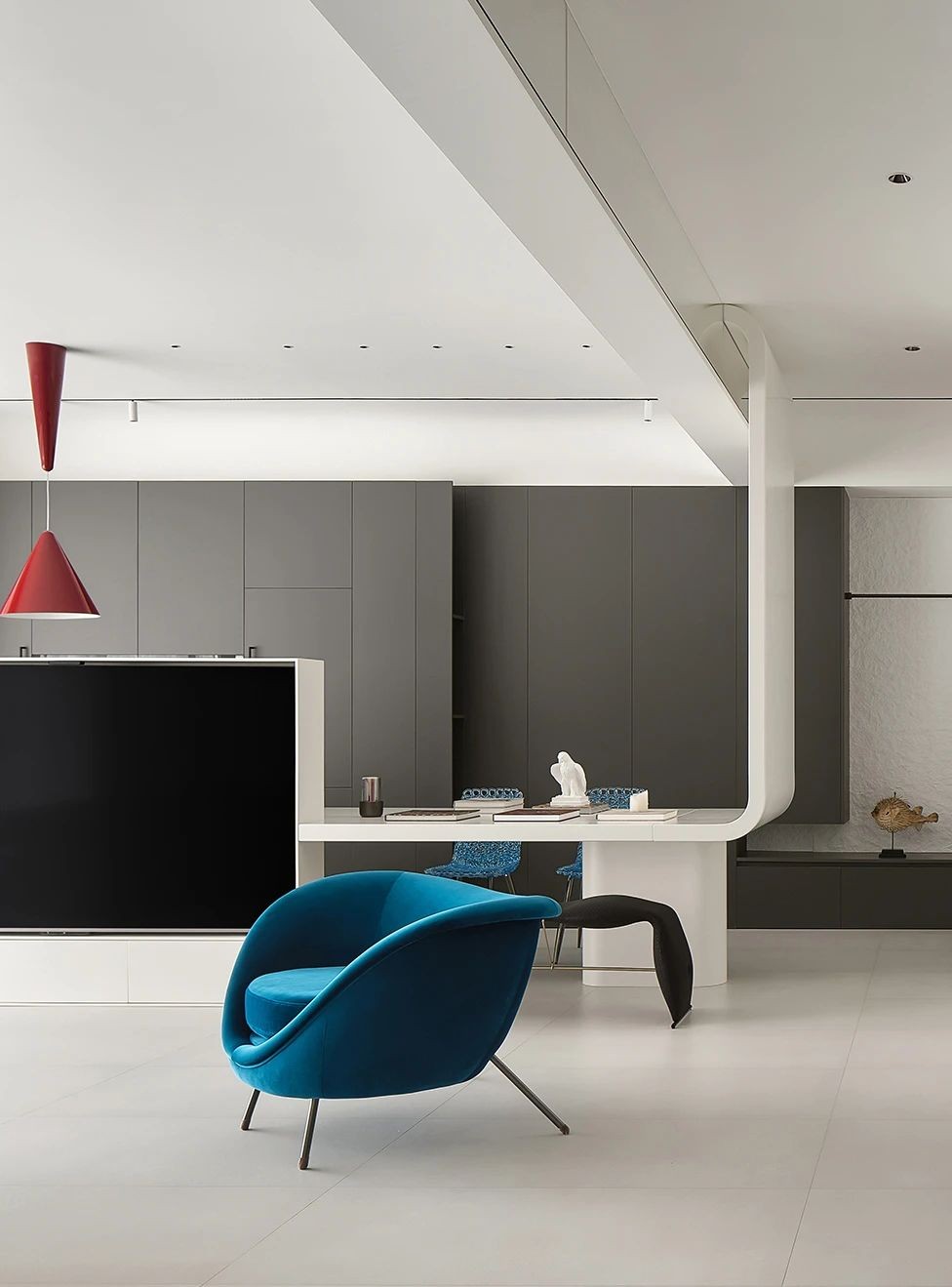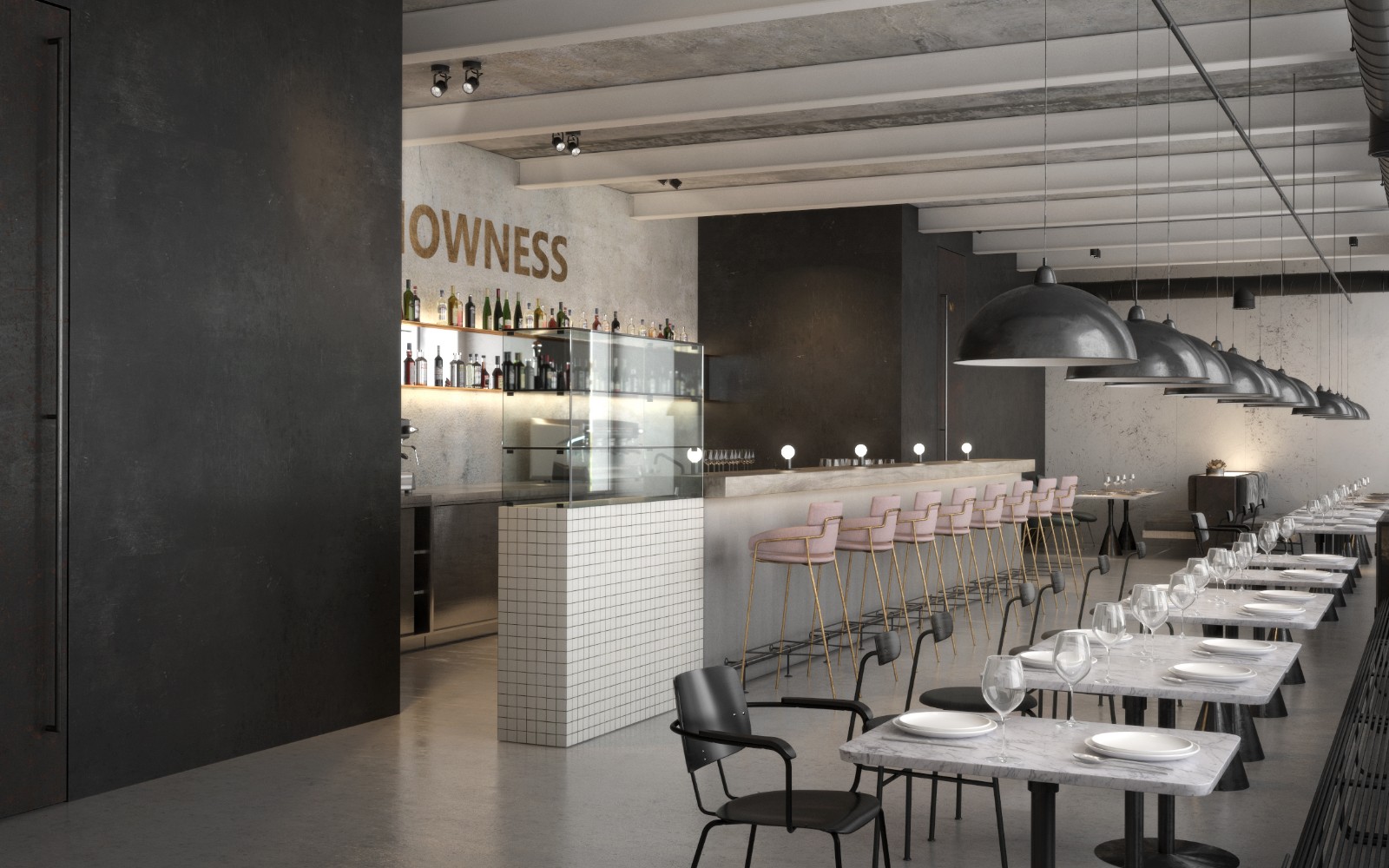Brooklyn Bridge Park What a Design by ONeill McVoy + NVda Says About the State of Architecture
2015-10-26 08:30
去年夏天,当布鲁克林大桥公园(布鲁克林Bridge Park)以入围者的身份在公园备受争议的6号码头推出14项入围方案时,你可能会误以为设计是活的、好的。公园总项目计划(GPP)的一个警告是为零售、住宅和酒店开发预留土地,以获得资金和实现财政自主权。这些计划已经引发了十年的法律斗争和当地社区的激烈反对,争论的范围从环境、公园美学、到赚钱计划,但去年,公园公布了一些相互竞争的计划,包括Acontote Architecture、Big、Davis Brody Bond、未来扩展SBN建筑公司、WASA Studio等的计划,这似乎是一种光明的结果。特别令人感兴趣的是,O‘Neill McVoy建筑师NV/DesignArchitecture(NVDA)。
Last summer, when Brooklyn Bridge Park unveiled 14 proposals as finalists for two residential towers at the park's controversial pier 6 site, you could be fooled into thinking that design is alive and well. A caveat of the park’s General Project Plan (GPP) was to set aside land for retail, residential and a hotel development, in order to secure funding and achieve financial autonomy. The plans had already fueled a decade of legal battles and fierce opposition from the local community, with arguments ranging from the environment, to park aesthetics, to money-making schemes, but last year a bright outcome appeared a possibility, when the park unveiled the competing plans including those by Asymptote Architecture, BIG, Davis Brody Bond, Future Expansion + SBN Architects, WASA Studio, and of particular interest, O’Neill McVoy Architects + NV/design architecture (NVda).
由于减少绿地和景观是公园用户和当地居民关注的两个主要问题,奥尼尔·麦克沃伊(O‘Neill McVoy)和NVDA在他们的“港口对”中将公众要求列为优先事项。对于较高的“花园螺旋塔”,这对夫妇提出了一个重复模式的混凝土板,建立内部空间和梯田,旨在给人的错觉公园地垂直延伸。在这座塔的顶端,将有一家公共餐厅,让人们可以看到曼哈顿下城和纽约港的景色。
As a reduction of green space and views were two of the chief concerns of park users and local residents, O’Neill McVoy and NVda made public demands a priority in their "Harbor Pair." For the taller "Garden Spiral Tower," the pair proposed a repeating pattern of concrete slabs that establish interior space and terraces, designed to give the illusion of parkland extending vertically. At the top of this tower there would be a public restaurant, affording the building’s views of Lower Manhattan and New York Harbor to the masses.
Concept Diagram. Image Courtesy of O'Neill McVoy Architects
这座较短的塔名为“轻型房屋”,被切割为三分一,这是一种装置,能让每个住宅都有街角的窗户-这是经济适用房中的第一个。它还能让阳光穿透建筑,并使建筑物西侧的公园和6号码头获得最大限度的晨光。
The shorter tower, "Light Sliced Housing," is cut into thirds, a device that allows each residence to have corner windows – a first in affordable housing – and also enables sunlight to pierce the structure and maximize the morning rays granted to the parkland and Pier 6 to the west of the structure.
Site Circulation. Image Courtesy of O'Neill McVoy Architects
现场循环O‘Neill McVoy建筑师的形象礼貌
双子塔周围的环流对公众来说是另一件好事。在项目描述中,奥尼尔·麦克沃伊(O‘Neill McVoy)和NVDA强调了这两座塔是如何接纳它们作为公园锚的角色的:
The circulation surrounding the towers is another boon to the public. In their project description, O’Neill McVoy and NVda stress how the towers embrace their role as anchors to the park:
这两座建筑形成了通往公园的多通道南部通道,整合了安全的行人通道、专用的和缓慢的车辆交通、自行车道和公共交通。附近的水上交通完成了一个理想的位置,以获得广泛的用途,在现场。一座新的人行桥在BQE上安全、直接地连接布鲁克林大桥公园、州立街和附近的地铁站。
The building pair form a multi-modal southern gateway to the Park, integrating safe pedestrian access, dedicated and slow vehicular traffic, bike paths, and public transportation. Nearby waterborne transit completes an ideal location for access to the wide variety of uses at the site. A new pedestrian bridge over the BQE safely and directly connects the Brooklyn Bridge Park to State Street and nearby subway stations.
Environmental Diagram. Image Courtesy of O'Neill McVoy Architects
环境图。O‘Neill McVoy建筑师的形象礼貌
认识到任何新建筑的生态需要,特别是在公园内,塔楼安装了绿色屋顶,收集雨水用于灌溉和水厕,用地热井加热和冷却,收集风能。“轻型住宅”将产生15%的能源来自涡轮机,而“花园螺旋塔”将允许居民购买个人涡轮机供他们自己使用。简而言之,该设计是一项具有社会和生态考虑的设计,似乎是布鲁克林桥公园公司(布鲁克林桥公园公司)支持的有力竞争者,或者至少是与到访的公众产生了共鸣-但却没有得到这样的赞誉。
Aware of the ecological imperatives of any new construction, particularly in parkland, the towers are outfitted with green roofs, collect stormwater for irrigation and water closets, are heated and cooled with geothermal wells, and collect wind energy. The "Light Sliced Housing" would generate 15 percent of its energy from turbines, and the "Garden Spiral Tower" would allow residents to purchase individual turbines for their own energy use. The design was, in short, a socially and ecologically thoughtful design that seemed a strong contender for Brooklyn Bridge Park Corporation support, or to at least make waves with the park-visiting public - but no such acclaim was to be had.
Winning Design Proposal. Image Courtesy of ODA
正如我们可能应该知道或预期的,或者正如马克·福斯特·盖奇所预言的那样,官方发展援助被宣布为7月的竞争冠军,拥有两座封闭的、不起眼的塔楼。诚然,这听起来可能不太令人不安,只是官方发展援助并不是去年8月宣布的14个入围名单中的一个,而是在这里全文公布的。当被问及这一设计时,布鲁克林桥公园公司总裁雷吉娜·迈尔(Regina Myer)为官方发展援助计划提供了一系列好处,理由是更负担得起的住房、整体公寓数量减少、总高度比公园总项目计划(General Project Plan)的最高高度限制低三层。这些理由可能会使怀疑官方发展援助优点的人信服,除非没有解释没有参加竞争的获胜者是如何被挑选出来的-尤其是在设计因周到和务实而受到赞扬时,其他提案中也存在着同样的特点,结果更为令人信服。
As we perhaps should have known or expected, or as Mark Foster Gage might have predicted, ODA was announced as the competition winner in July with two blockish, nondescript towers. Admittedly this may not sound too unsettling, except for the fact that ODA was not one of the 14 finalists announced last August, and published in-full here. When asked about the design, Brooklyn Bridge Park Corporation President Regina Myer offered a range of benefits to the ODA plan, citing more affordable housing, fewer apartments overall, and a total height three stories shorter than the maximum heights limits in the park’s General Project Plan. These reasons might convince a skeptic of ODA’s merit, except there was no explanation as to how a winner who had not participated in the competition was selected – especially vexing as the design is being lauded for thoughtfulness and practicality, when the same attributes existed in other proposals with more compelling results.
View from Manhattan. Image Courtesy of O'Neill McVoy Architects
曼哈顿的景色。O‘Neill McVoy建筑师的形象礼貌
鉴于O‘Neill McVoy/NVDA提案与所选择的官方发展援助设计之间存在着巨大的设计差异,不妨引用古哈斯在“疯狂的纽约”中的论点,在那里,Rem以将曼哈顿主义等同于建筑肺叶,内部和外部是分开的,“Monolith为外部世界免除了内部持续变化所带来的痛苦”。这种情绪将为官方发展援助的获胜设计提供明确的货币。然而,疯狂的纽约现在已经将近四十年了,虽然像山崎世界贸易中心这样的无柱盒子可能成为了新的吸引人的地方,但现在这种结构已经非常普遍,而且风格也非常陈旧。官方发展援助的设计是一个网格连接盒,最大限度地增加了楼面面积,但在设计方面几乎没有提供什么区别。它只不过是一个居住的街区。在过去,曼哈顿的繁荣是因为它直面传统,为建筑创新开辟了道路。随着资本主义的议程现在运作着一系列的建筑,真正的肺叶是在讨论和那些有钱来塑造它的人之间。布鲁克林大桥公园的陷阱和秘密不仅是公园游客或纽约市的损失,也是整个设计议程的一部分。
Given the dramatic design differences between the O’Neill McVoy/NVda proposal and the chosen ODA design, it might seem fitting to cite the arguments of Koolhaas in Delirious New York, where Rem famously equated Manhattanism to an architectural lobotomy, where interior and exterior are separate, and “the Monolith spares the outside world the agonies of the continuous changes raging inside it.” The sentiment would give clear currency to ODA’s winning design. However, Delirious New York is now almost forty years old, and while column-free boxes like Yamasaki’s World Trade Center may have then been novel attractions, such structures are now exceedingly common and stylistically stale. The ODA design is a grid-adhering box that maximizes floor area, while providing little in terms of design distinction. It is little more than a block meant for inhabitation. In the past, Manhattan thrived by flying in the face of convention and setting the course for architectural innovation. With the capitalist agenda now working the strings of architecture, the real lobotomy is between the discourse and those with the money to shape it. The pitfalls and secrecy at Brooklyn Bridge Park are not just a loss for parkgoers or the city of New York, but the design agenda at large.
Garden Spiral Tower. Image Courtesy of O'Neill McVoy Architects
花园螺旋塔。O‘Neill McVoy建筑师的形象礼貌
作为解药,马克·福斯特·盖奇提供了艺术家埃德沃德·蒙克的一句名言:“从我腐烂的身体里,花朵将生长。”他详细阐述了“建筑之地终有一天会因分解而变得肥沃;它正等待着新一代的种子种植者,他们装备着自我价值、信心和雄心,以抵御容易达到的、腐烂的地面果实的诱惑。”这可能是说起来容易做起来难,有点戏剧性,但盖奇的基本信息是适合于这一背景。我们需要更多的建筑师,他们愿意挑战现状,不仅仅是在大型博物馆的扩建或超级博物馆的高楼大厦,而是有着更平等的目标的项目。奥尼尔·麦克沃伊(O‘Neill McVoy)和NVDA这对港口公司代表着一条前进的道路,建筑师们在这个计划中对资本主义议程做得很好,但通过巧妙的设计来缓解公众的担忧-只要我们能让开发商相信这些好处就好了。
As antidote Mark Foster Gage offers a quote from artist Edvard Munch: “from my rotting body, flowers shall grow.” He elaborates “the ground of architecture will someday soon become fertile from decomposition; it awaits a new generation of seed-planters equipped with the self-worth, confidence, and ambition to resist the temptation of easily reachable, decaying ground fruit.” This is perhaps easier said than done and a bit melodramatic, but Gage’s underlying message is appropriate for this context. We need more architects who are willing to challenge the status quo, not just in major museum expansions or high-rises for the ultrarich, but with projects that have more egalitarian aims. The Harbor Pair of O’Neill McVoy and NVda indicates a way forward, one where architects make nice with the capitalist agenda, but in a plan that assuages public concerns through design ingenuity - if only we can convince developers of the benefits.
Brooklyn Waterfront. Image Courtesy of O'Neill McVoy Architects
布鲁克林海滨。O‘Neill McVoy建筑师的形象礼貌
建筑师O‘Neill McVoy建筑师,NV/建筑设计地点布鲁克林桥公园-6号码头-沙滩排球场,布鲁克林桥公园格林威,纽约布鲁克林,11201,美国建筑师,负责NV/设计建筑O’Neill McVoy建筑项目小组贝丝O‘Neill,Chris McVoy,Rusudan Magishvili,Georgios Avramides,Steven Shimamoto,Eirini Tsachrelia NV/建筑设计项目组Tom Van Den Bout,Brenda Nelson,Kim Letven,Marcello Pacheco Structure Robert Silman Associates气候工程公司Transsun KlimaEngineering项目,2014年
Architects O'Neill McVoy Architects, NV/ design architecture Location Brooklyn Bridge Park - Pier 6 - Beach Volleyball Courts, Brooklyn Bridge Park Greenway, Brooklyn, NY 11201, USA Architect in Charge NV/design architecture O'Neill McVoy Architects Project Team Beth O’Neill, Chris McVoy, Rusudan Margishvili, Georgios Avramides, Steven Shimamoto, Eirini Tsachrelia NV/design architecture Project Team Tom Van Den Bout, Brenda Nelson, Kim Letven, Marcello Pacheco Structure Robert Silman Associates Climate Engineering Transsolar | KlimaEngineering Project Year 2014
 举报
举报
别默默的看了,快登录帮我评论一下吧!:)
注册
登录
更多评论
相关文章
-

描边风设计中,最容易犯的8种问题分析
2018年走过了四分之一,LOGO设计趋势也清晰了LOGO设计
-

描边风设计中,最容易犯的8种问题分析
2018年走过了四分之一,LOGO设计趋势也清晰了LOGO设计
-

描边风设计中,最容易犯的8种问题分析
2018年走过了四分之一,LOGO设计趋势也清晰了LOGO设计




































































